5 Ways to Beat the Heat
It’s been a warm summer so far! After my easy run during Monday’s heat, I thought it would be helpful to share 5 ways I’ve found to “Beat the Heat”!
1. Run by effort – or convert pace
In hot and humid conditions you must run on feel – or convert your pace goals. It sounds obvious, but even I find myself falling in the trap of trying to stick to my typical cooler-weather paces on days I shouldn’t. It’s just easy to get too caught up on pace! I find using a heart rate monitor helpful when running in the heat. Instead of having my watch face display pace and distance, I’ll have it just show HR. I also pay keen attention to how I feel and how I’m breathing.
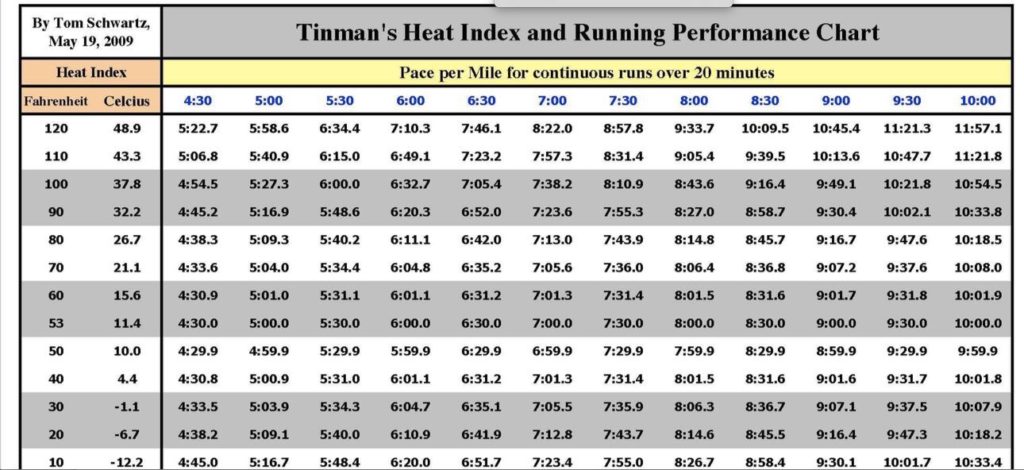
For hard efforts, I will either run more on effort (with the help of a HR monitor) or I’ll convert my cooler-weather paces using something like the Tinman’s heat index conversion table (pdf version here). Another way I’ve used to convert pace goals is to adjust your pace ~0.1% to 0.15% for each degree above 60 F. Early in the season, when you aren’t accustomed to the heat, the adjustment will be closer to 0.15% – but by the end of the season it may be down to 0.1% or less. If the humidity level is high, add 5-10 degrees to the air temperature you’re using the adjust the pace.
Example: If I normally run 8 miles at 7:30 pace on a cooler weather day, but it’s 85 degrees F with a dew point of 71 (like it was Monday afternoon!), than I’d convert my goals for the day:
95-60 = 35 degrees over 60F (I used 95 instead of 85 because the humidity was very high – anything over 70 warrants additional conversion!). 35 x 0.1% (since I’m fairly acclimatized) = 3.5%. 3.5% slower than 7:30 is 7:46 per mile.
Obviously both of these guides are just that – guides! They should be customized a little bit to your personal circumstances.
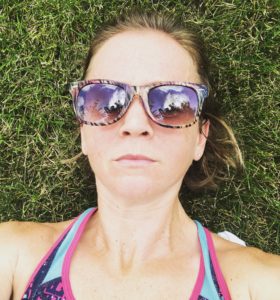
2. Avoid the hottest part of the day
Run early, run late, or take your run indoors — ’nuff said!
3. Plan your route.
Find a shaded trail! Here in Northfield I have access to great trails at both Carleton and St. Olaf. Not only are they more shaded areas to run in, I’m also avoiding the heat that bounces off of asphalt and concrete.
Find water! I know where all of the working drinking fountains are around town so l can head to one if I need it. I’ve also made stops inside local businesses that I know have drinking fountains when I absolutely need it (the DQ in Northfield!). I’ll sometimes run with a water bottle down to the track for interval work, but other than that, I’ve found carrying water during runs to be uncomfortable (backpacks, Fuel Belts, horizontal water packs, you name it, I’ve tried it!). I stick to planning routes around public water sources to be easier – and much more comfortable.
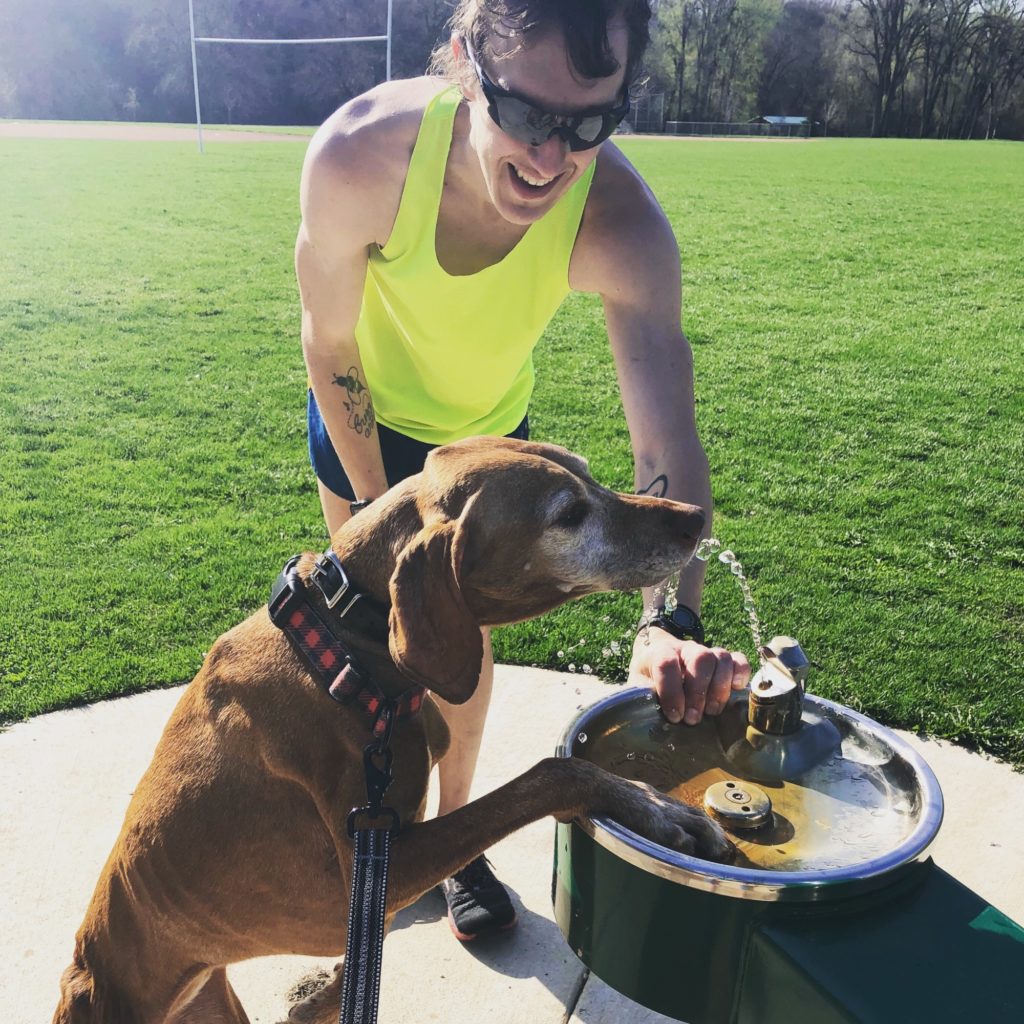
One other route planning tip: try to run with the wind on your way out during an out-and-back run so that you can run into the wind on your way back home. You’ll thank yourself. Just remember to do it the opposite way when winter comes :).
4. Look out for dehydration
Water and electrolytes are key, and listening for thirst cues won’t cut it.
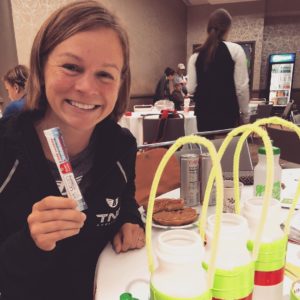
Losing as little as 2% of your body weight in fluids – for example, 2.8 pounds (about 44 ounces of water) in a 140-pound marathoner – can cause measurable decreases in performance. Dehydration of more than 3% of your body weight is serious, increasing the possibility of heat exhaustion and heat stroke in warm and/or humid conditions. Since athletes can sweat out 6% to 10% of their body weight during competition, you can see the importance of rehydrating.
Don’t just think about drinking liquids – although that’s the obvious way to re-hydrate – you can get in fluids through your diet as well. I’ll sometimes pack hydrating foods on hot days: cucumbers, watermelon, cantaloupe.
I advise runners to monitor their urine color with the goal of a light “lemonade” color. Anything darker than that means you should be pounding more water!
Be aware of hyponatremia, caused by overhydrating, as that can be serious.
5. Dress “cool” and protect your skin
Wear light colors and technical, breathable fabrics. If you’re still training in cotton socks, please grab a pair of technical socks (Feetures! are my favorite). Technical fabrics make a huge difference in how comfortable you’ll be during your run!
I always wear suncreen during a run (my morning moisturizer has SPF 30 in it), although hate it when it starts to run into my eyes when I sweat. Oh well – small price to pay to keep my skin safe! Sunglasses and visors or hats are other great ways to protect your eyes and skin.
6. (Bonus!) Remember that you’re making yourself stronger by training in the heat!
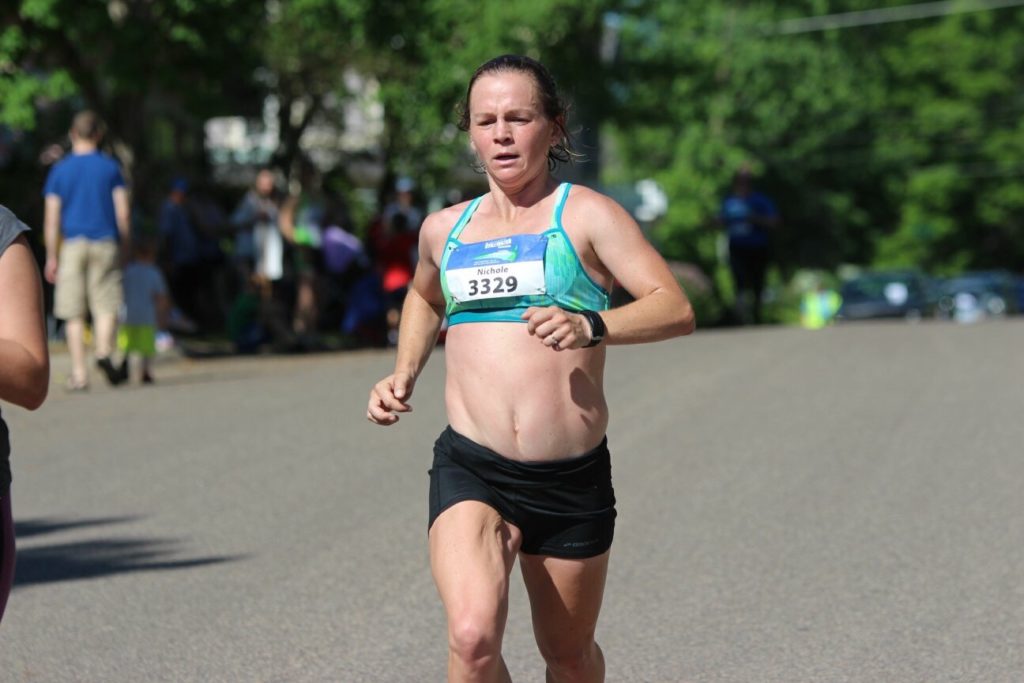
Simply put, running in hot and humid conditions is harder on the body! The higher the temperature, the harder the body has to work to cool itself – so more blood is diverted away from muscles and to the skin surface. The higher the humidity levels, the slower sweat evaporates which slows the cooling process. Heat and humidity can lead to dehydration, which forces your heart to pump faster to make up for the loss of blood volume.
But, training in the heat also makes us stronger. Coach M. Hadley said it well here:
So now that we have talked about the downside of training in the heat, let’s talk about the benefits. There seems to be good evidence that training in the heat may have very similar effects to training at altitude. Think about it for a minute. At altitude the level of oxygen delivered by our blood to our muscles and organs is less because oxygen levels are lower at altitude. The body responds to this by increasing our blood supply so we have more blood with which to deliver the oxygen. Similarly in the heat, if a portion of blood supply is being diverted to the skin, that leaves less going to the muscles and organs and the body can respond to that over time by increasing our blood supply. So altitude and heat may be two different ways to achieve the same beneficial adaptation (increased blood supply). Additionally there is evidence that warm weather training increases our body’s efficiency at cooling itself, which has carry over benefits even when we are running/racing in cooler temperatures. The less the body has to work to cool itself, the more blood available to transport oxygen to the muscles.
So instead of dreading training in the warmer weather this summer, embrace it as an opportunity improve yourself as a runner with bout of “poor man’s altitude” training.

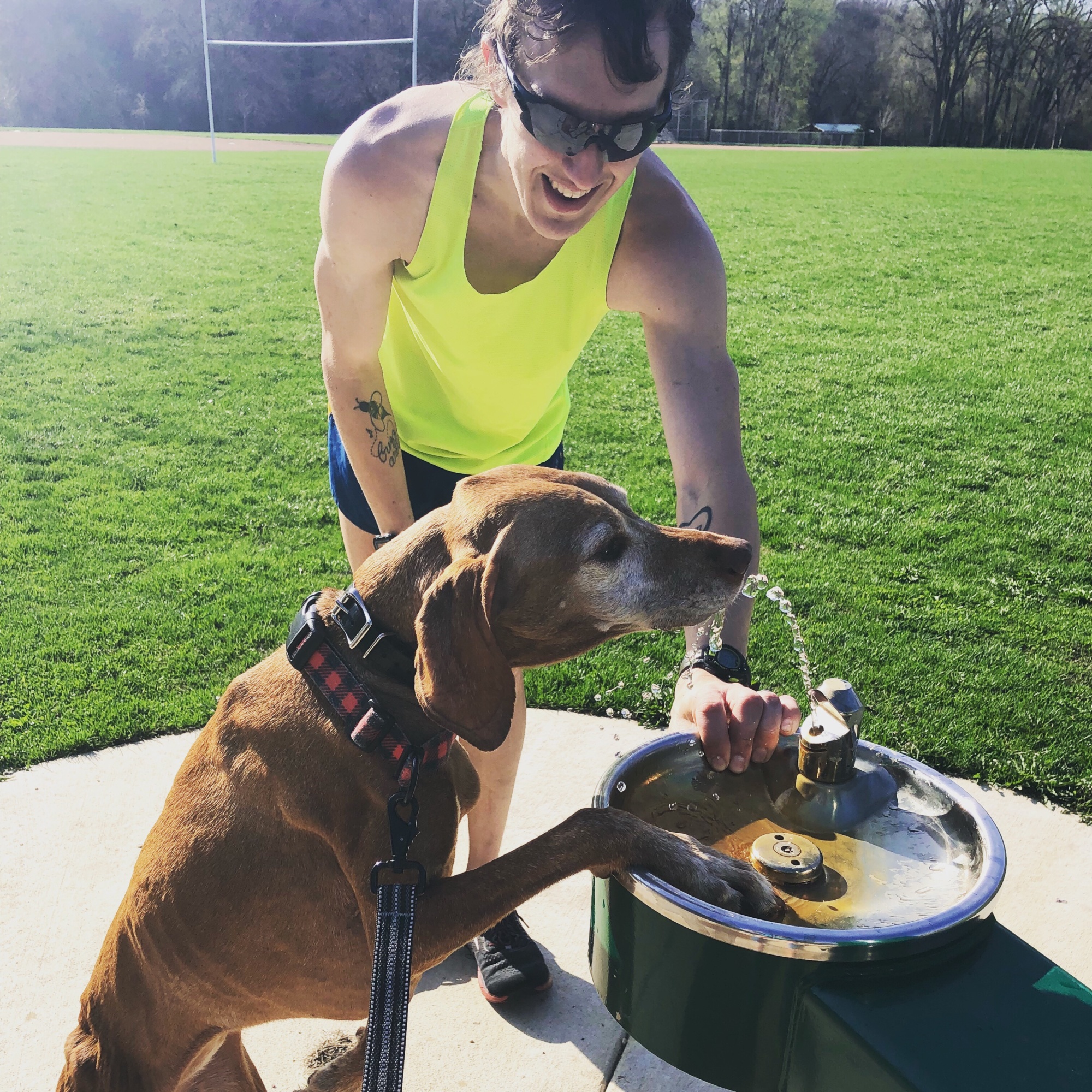
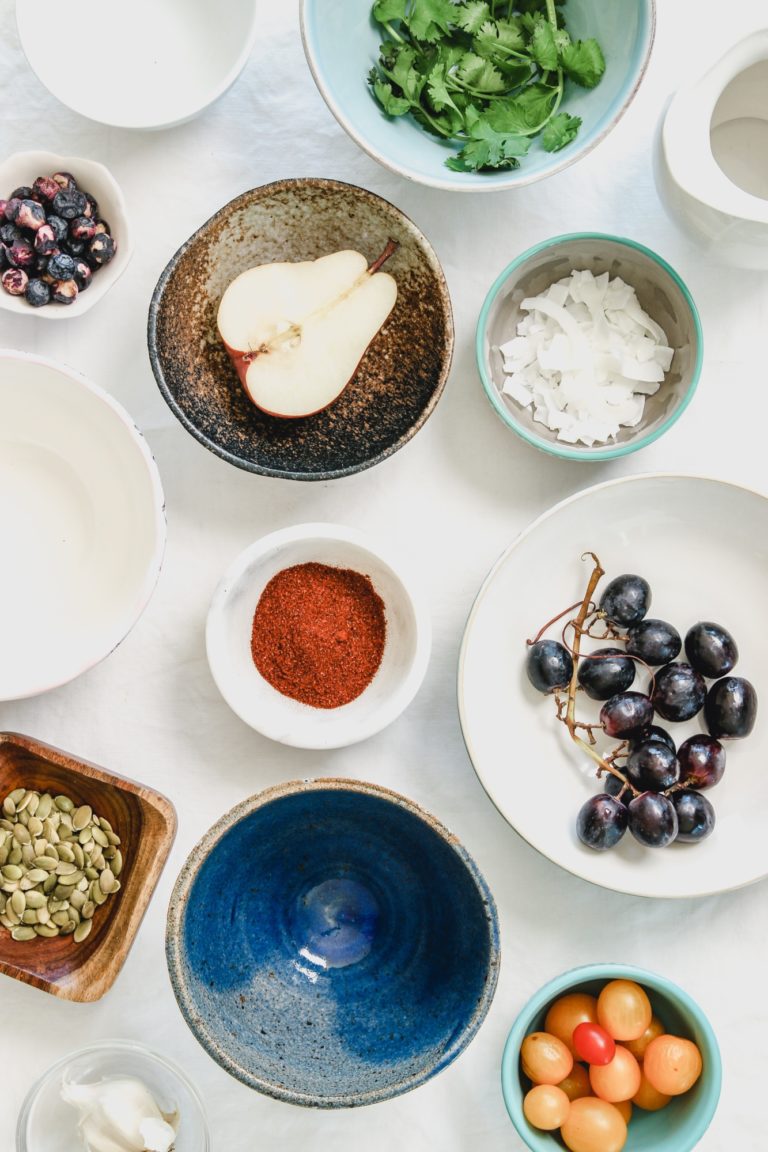
One Comment